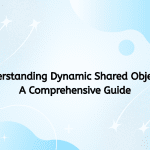Writing and editing blog posts and website links has become easier than ever with SEO optimization features in WordPress. Learn how WordPress helps up-and-coming blog owners get their content noticed.
What Is SEO?
SEO stands for Search Engine Optimization. The more keywords and high-ranking phrases in your blogs and other website links, the higher your site will rank on Google and other search engines.
Businesses make optimizing for SEO a top priority to increase traffic to their website in the hopes it’ll lead to conversions (sales). For example, if your keyword phrase is sports betting online in Belgium, you would want to integrate it into the title and at least thrice throughout the piece. The most common first place would be within the first or second paragraph of the post.
Basic SEO Optimization Features In WordPress
WordPress has a feature where you can integrate the primary keyword and then highlight it in the document to see how many times it appears in the document. If you have other secondary keywords that need to be present in the blog, they can be listed under the primary keyword.
Secondary keywords should be integrated at least once or twice. Avoid keyword stuffing, which means placing too many of the same keywords throughout one piece.
Based on the presence of these keywords, WordPress will rate your SEO based on a color. Red means it’s not SEO-friendly, while yellow means it’s on its way to that status. Green means that the piece is SEO-friendly with good readability. Always go for the green.
Choose a Relevant Theme
Your blog’s theme and layout are important to ensure readers are getting faster load times and easier navigation for a better user experience. Themes such as Astra or GeneratePress are the most popular for keeping a simplistic, user-friendly layout.
Use tools such as Google PageSpeed to test how many seconds it takes to load pages. Faster load times improve the user experience.
Create Strong Titles and Meta Descriptions
The title of the blog and the meta-description will be the preview that readers see before clicking on it in a search engine. A title should contain engaging and impactful language with the keyword integrated within it. It should be no more than 60 characters.
A meta description should be no more than 160 characters and also include the primary keyword. Going with the same example from earlier, a meta description for the topic could read:
“Sports betting is different across various regions. Learn the most popular tennis, football, and rugby teams for sports betting online in Belgium.”
This meta description is 146 characters long, including spaces, and includes the keyword. An engaging title to go along with this meta description could be “5 Most Popular Teams for Sports Betting Online in Belgium”, which is 57 characters long.
Use SEO Plugins
SEO plug-ins integrate seamlessly into WordPress to ensure you are writing readable, engaging SEO-friendly content. Yoast SEO is one of the most popular because first-time SEO optimizers find it easy to use over other platforms. Plug-ins can evaluate the strength of your title, meta description, and how many times primary and secondary keywords come up in the blog.
Optimize Permalinks
Permalinks should be short and tell the reader about the post without becoming too long. Usually, a blog post will have its title separated by dashes after the website name. Going with the same example above, the permalink could be this if the website name were Belgian Sports Daily in this scenario:
https://www.belgiansportsdaily.com/5-most-popular-teams-for-sports-betting-online-in-belgium
Conclusion
SEO optimization takes time and practice. Have a colleague give you a tutorial in person or over a Zoom call to get a better understanding of the platform itself and how your website or blog can achieve SEO greatness.






